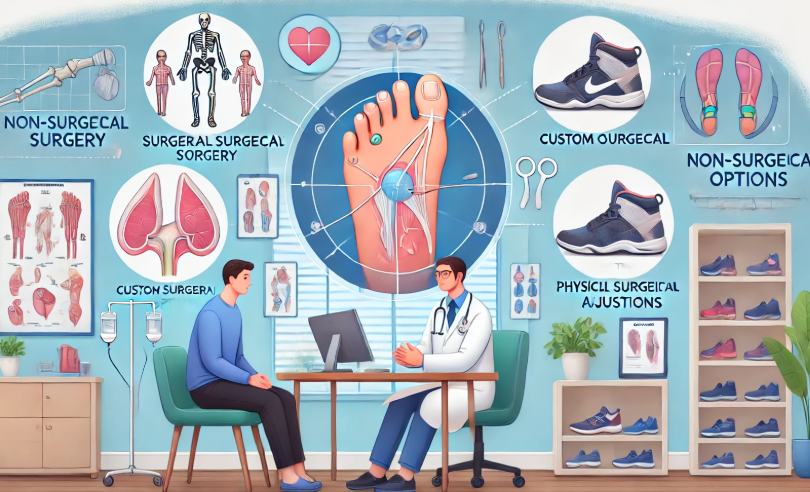Bunions are a common foot condition that can cause pain and impact daily activities for many individuals. Whether caused by genetics, lifestyle factors, or other health conditions, bunions may prompt individuals to explore treatment options. Here is more information on what bunions are, their causes, treatment methods, and how to decide on the best approach for addressing the condition:
What Are Bunions?
A bunion, medically known as hallux valgus, is a bony bump that forms on the joint at the base of the big toe. This condition occurs when the big toe pushes against the neighboring toe, causing the joint to deform and enlarge over time. The resulting bump varies in size and may cause pain or difficulty when wearing shoes.
While commonly associated with the big toe, smaller bunions, known as bunionettes, can also form on the joint of the little toe. The severity and symptoms of bunions differ between individuals, often influencing the treatment approach. Consulting a professional helps with diagnosis and treatment.
What Are the Causes and Symptoms?
Bunions develop due to various factors, including genetics and lifestyle choices. Conditions such as flat feet, arthritis, and certain inherited foot shapes may predispose individuals to bunion formation. Poorly fitting footwear, particularly shoes with a narrow toe box or high heels, can also contribute to the condition by placing excessive pressure on the toes.
The symptoms of bunions may include swelling, redness, or pain around the affected joint. The bump may grow over time, restricting movement in the big toe. Corns and calluses might form due to overlapping toes, and prolonged pressure in this area can exacerbate pain.
What Is Bunion Surgery?
Bunion surgery refers to procedures designed to correct the misalignment of the bone causing the bump. These procedures may be recommended for individuals experiencing significant pain or restricted mobility. Several surgical techniques are available, depending on the severity of the bunion and the patient’s individual needs.
Arthroscopy may be employed in some cases, offering a minimally invasive approach that uses small incisions and specialized tools to correct the deformity. Laser surgery is another option that is precise and may reduce healing times. These advancements allow for greater customization in addressing the condition.
What Are Non-Surgical Options?
Non-surgical options can provide effective relief for individuals with mild to moderate symptoms. These approaches aim to alleviate discomfort and prevent further progression of the condition without the need for invasive procedures. One standard non-surgical method is footwear modification. Choosing shoes with a wide toe box and avoiding high heels can reduce pressure on the affected joints.
Orthotic devices offer additional support and realign the foot to minimize pain. These measures can be particularly useful when combined with other lifestyle adjustments. This includes maintaining a healthy weight or incorporating foot exercises.
What Is Right for You?
Determining the right choice between surgical and non-surgical options depends on the severity of the bunion and your specific needs. Individuals experiencing severe pain, restricted mobility, or unsuccessful results from non-surgical approaches may benefit from surgical intervention. Those with mild symptoms or concerns about surgical recovery may prefer non-invasive strategies. It is recommended to consult a healthcare professional to evaluate your condition thoroughly.
Seek Expert Guidance Today
Bunions can affect comfort, mobility, and overall quality of life. Whether exploring surgical options or evaluating non-surgical approaches, understanding the available treatments is a step toward making informed decisions. Consulting with a medical professional helps you identify the best solution for your unique situation. Take the first step in addressing your bunion concerns and find relief.
- How Bail Bondsmen Help Families Navigate the Legal System
- Maximizing Productivity in Your Office Space Through Thoughtful Design
- The Benefits of Working With an Attorney for Your Car Accident
- How to Choose the Right Lighting for Kitchen Remodeling
- Lifestyle And Cost Of Living Insights for Retiring In Panama
